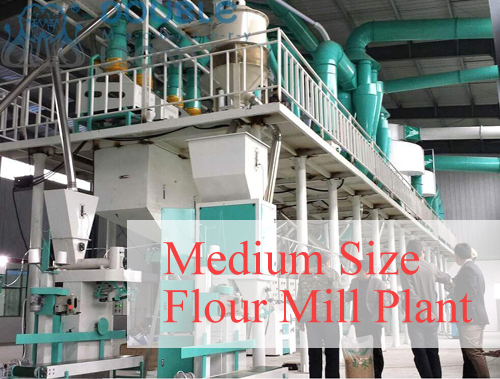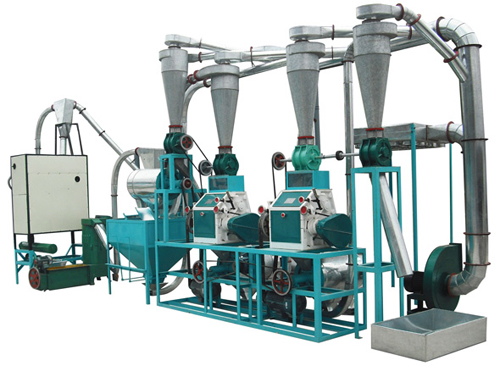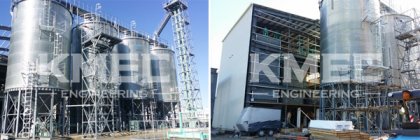What do small and medium-sized complete flour mill plants develop in the market?
Small and medium-sized complete flour mill plants refer to flour plant with a daily processing capacity of 60-180t wheat/d. They have the largest number in the country. Compared with large-scale and super large-scale automatic flour plants such as Wudeli and Guchuan, most of them have a single product variety and quality unstable, low operating rate. However, some small and medium-sized flour plants have been surging, and the market share and profitability of plants in some regions do not fall behind the large-scale automatic wheat flour mill plant.What do small and medium-sized complete flour mill plants survive and develop in the market?
1 Overview
Taking Hebei and Shandong as examples, small and medium-sized automatic flour mill plants are mostly located in rural or small towns with convenient transportation. They are developed by long-term development and technological transformation of small processing units in rural areas and have relatively stable user groups. The flour milling equipment is mainly composed of 8~12 sets of double mills and 2~4 sets of high square screens and the milling process basically reaches the process system setting of medium and long powder roads. Compared with the milling process of large plants, the system setting is relatively simple, the material distribution is extensive, the product quality is slightly lower, and the conditions of matching wheat and flour are not available. The production management and technical strength are weak, and the product stability is much lower than that of large flour mill plants.
Medium size flour mill plant
2 advantages
Compared with complete large-scale flour mill plants, small and medium-sized automatic flour mill plants do not have advantage, can they occupy a place in the market competition? The answer is yes, they can. The advantages of small and medium-sized flour plants are mainly reflected in the following aspects.- Less investment. The unit capacity investment of the newly built small and medium-sized flour production line is 1/3~3/4 lower than the unit capacity investment of the large-scale or extra-large flour production line. If the old factory building and old equipment are repaired and modified, the investment is lower. Most of the small and medium-sized flour plants are step by step from small units and small factories. The proportion of their own funds is higher when upgrading and upgrading, and even some of the inputs are self-owned funds, so the bank repays and repays the company's bank. The burden is low, and the cost of loans and interest in product costs is much lower than that of large flour companies.
- Market direction. Small and medium-sized flour mill plants are based in rural areas and facing rural areas. With the complete elimination of small units and small workshops, the phenomenon of flour mills in villages has disappeared. Instead, each village has one or several fixed subcontracting processing exchange points and some mobile exchange stations. The radiation radius is 10~20km. This kind of barter is much safer, and the profit margin is large, which provides a guarantee for the survival of small and medium-sized flour plants. Most of the sales targets of small and medium-sized flour plants are food and workshops and sales and retail outlets in villages and surrounding cities. Most of the products are sold directly and provide delivery services. This reduces the intermediate links of sales and has a large profit margin.
- Raw material costs. Small and medium-sized flour mill plants are located in rural areas. The business direction is two parts: agricultural processing and exchange and market sales. Most of the business volume accounts for about half of each, and some processing and exchange business can account for 70% of the total business volume. Therefore, the purchase of wheat is not too hot. It mainly purchases surplus wheat from farmers and wheat sold by small grain sellers. The wheat purchase price of the larger average wheat mill is 20~60 yuan/t. The wheat purchased by small and medium-sized flour plants has good quality, low impurity, low moisture content and high bulk density. There are many farmers in rural areas, and the price of raw material is not that high.
- Electricity consumption costs, due to national energy shortages, energy conservation and emission reduction, peak and valley electricity prices are implemented in most parts of the country to encourage peak power consumption. The operation rate of small and medium-sized powder mills is relatively low. Most plants use night-time grain-price electricity production. The electricity price is lower than the peak price by more than 1/2. Compared with the 24-hour non-stop, the modern mill industry cost less in enrrgy compsution.

Small size flour mill plant




